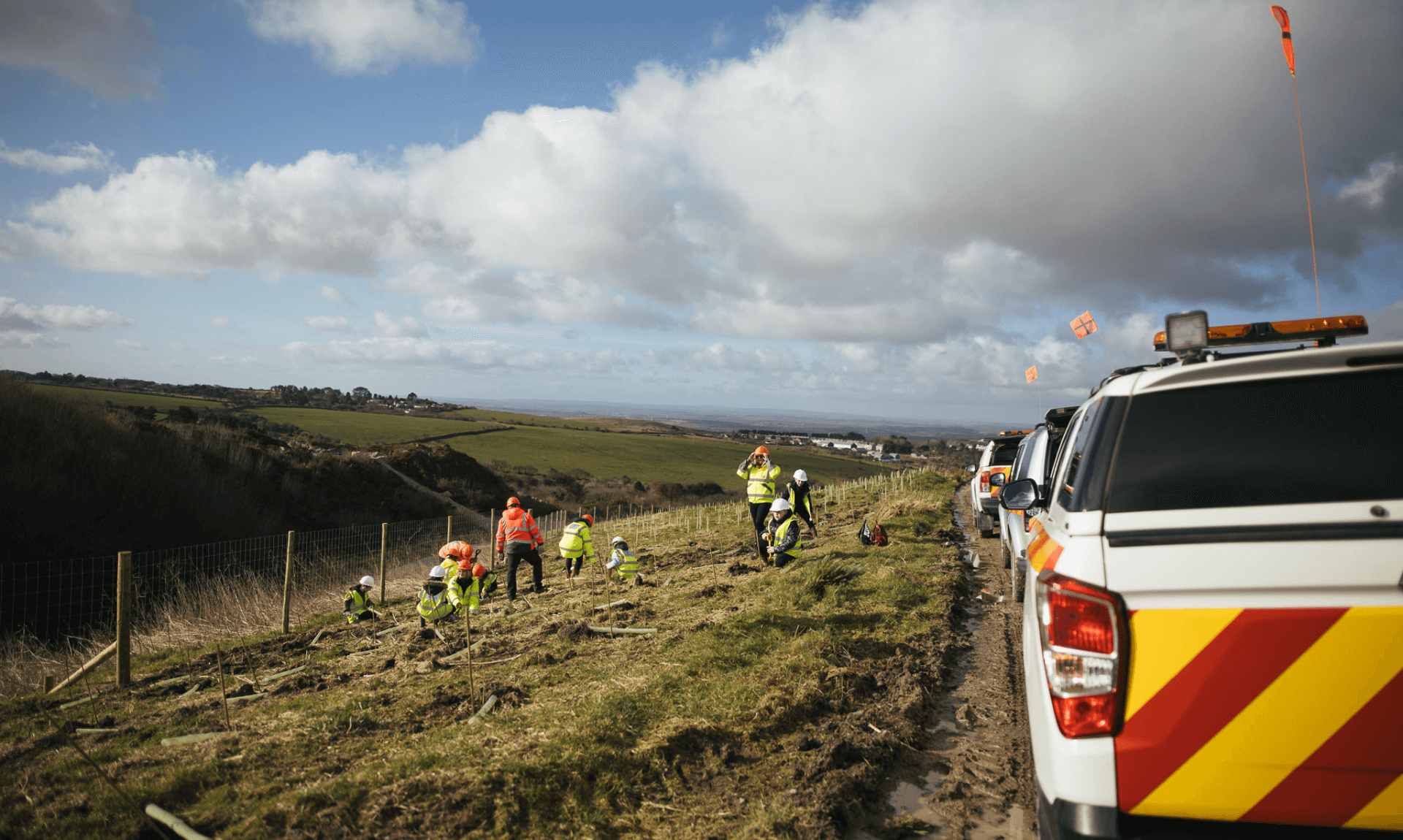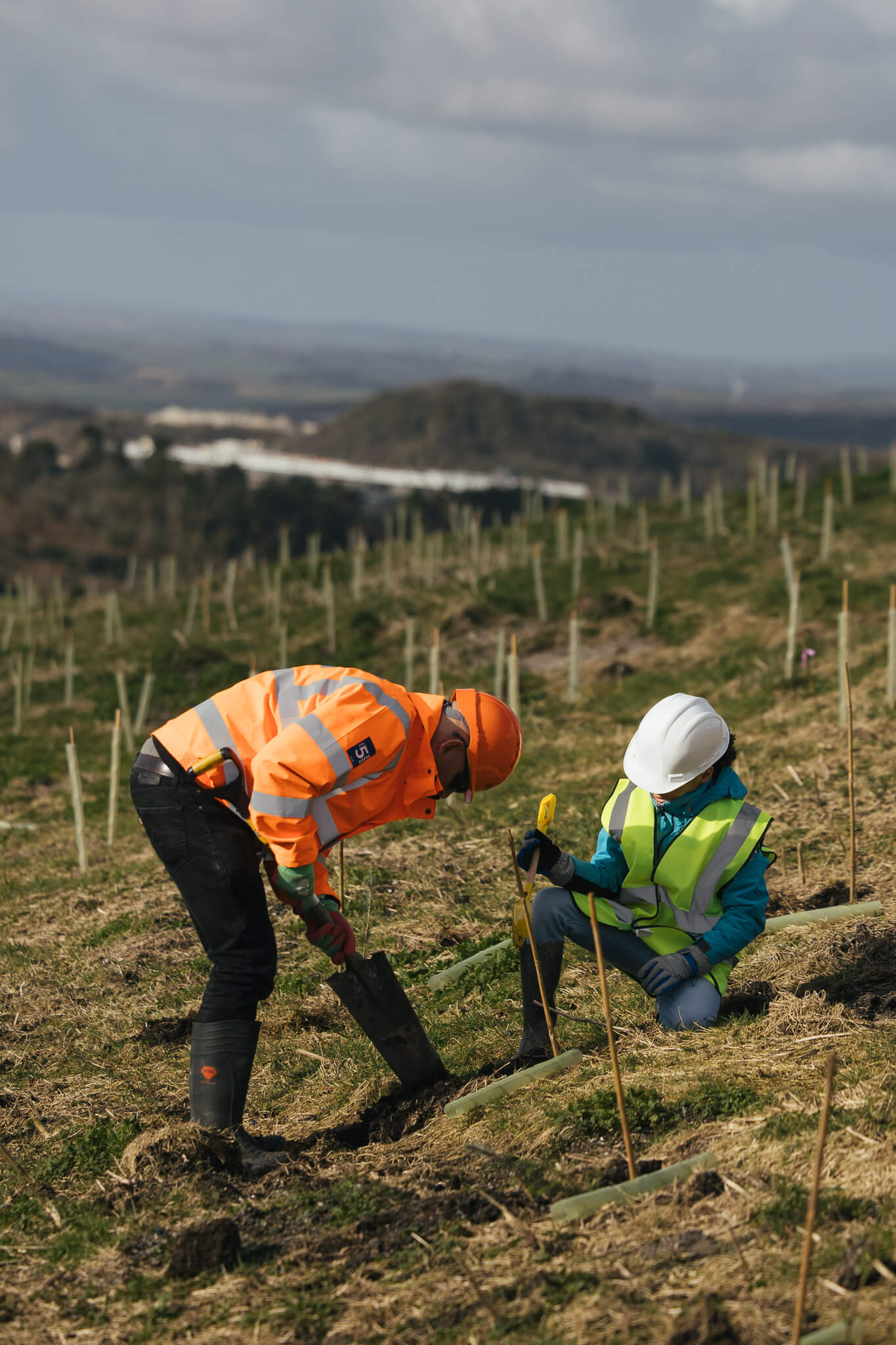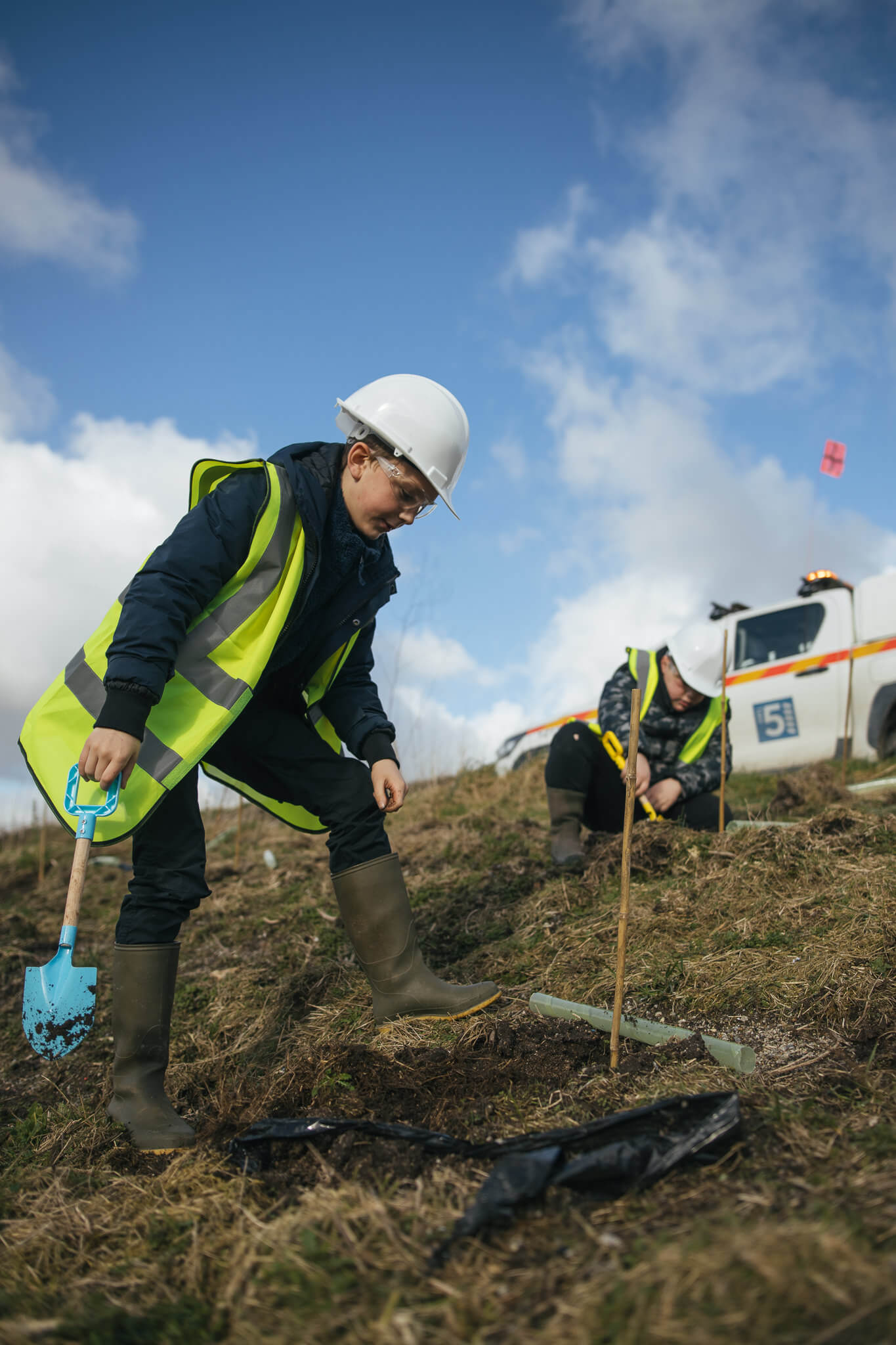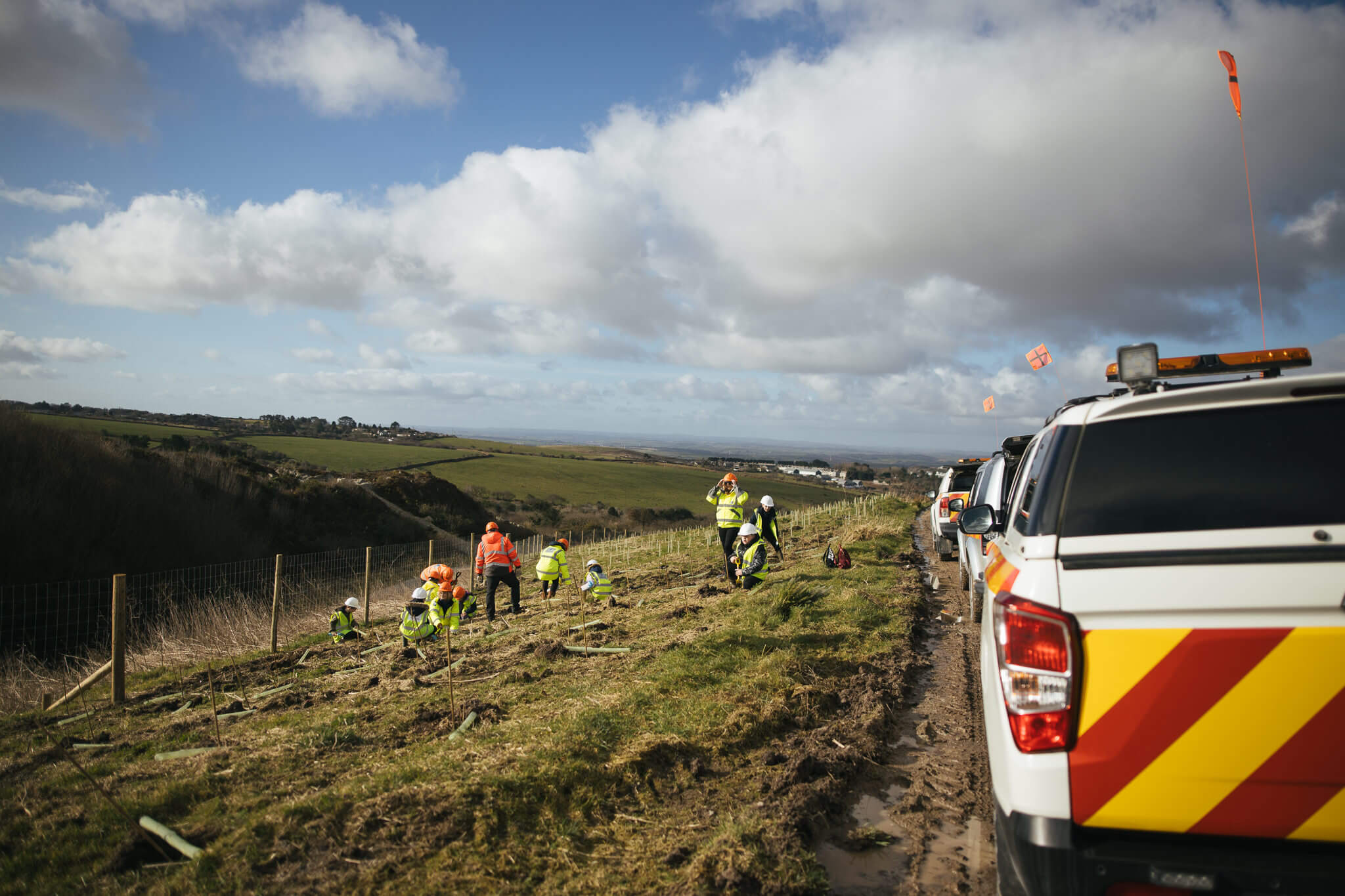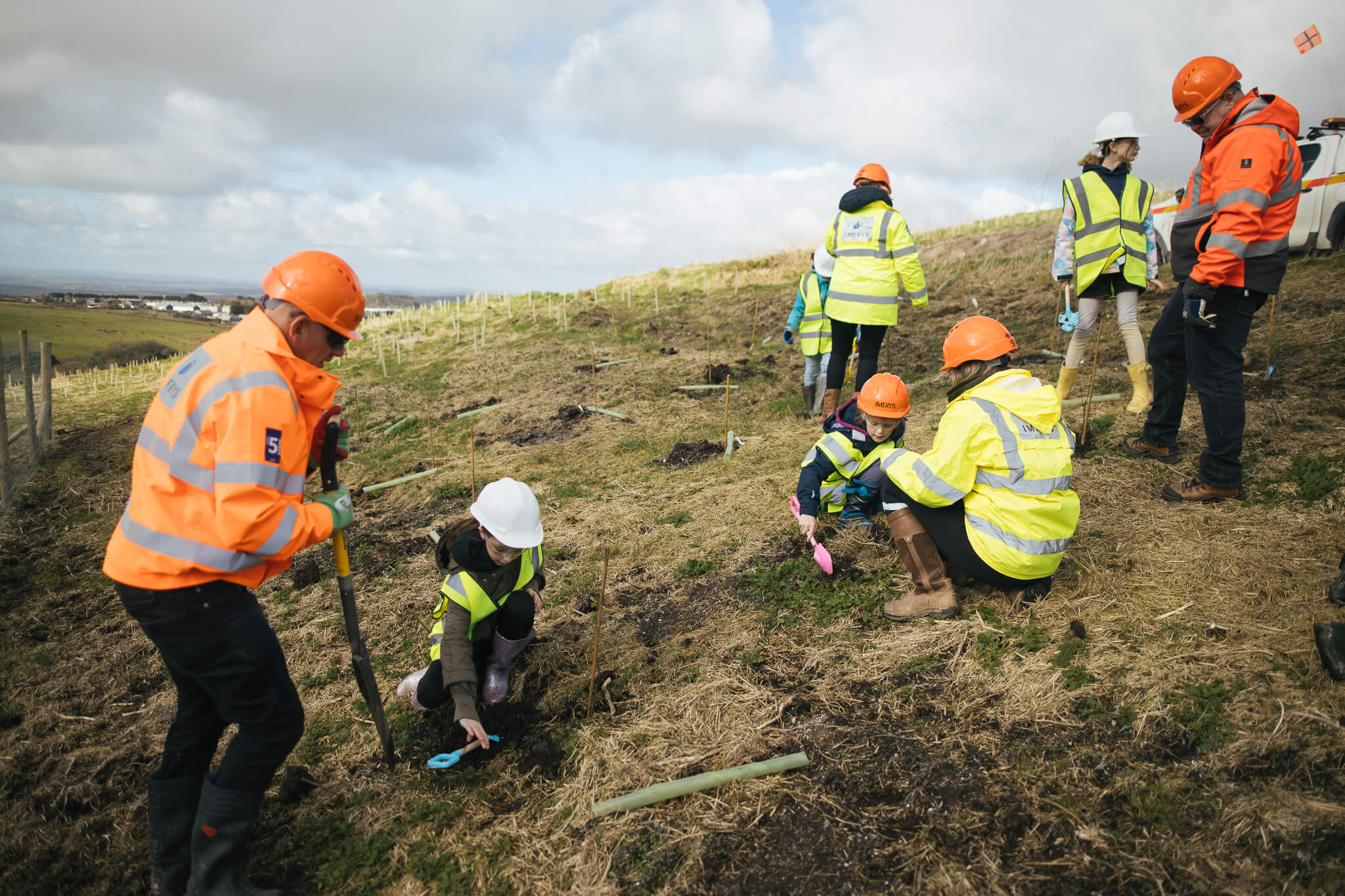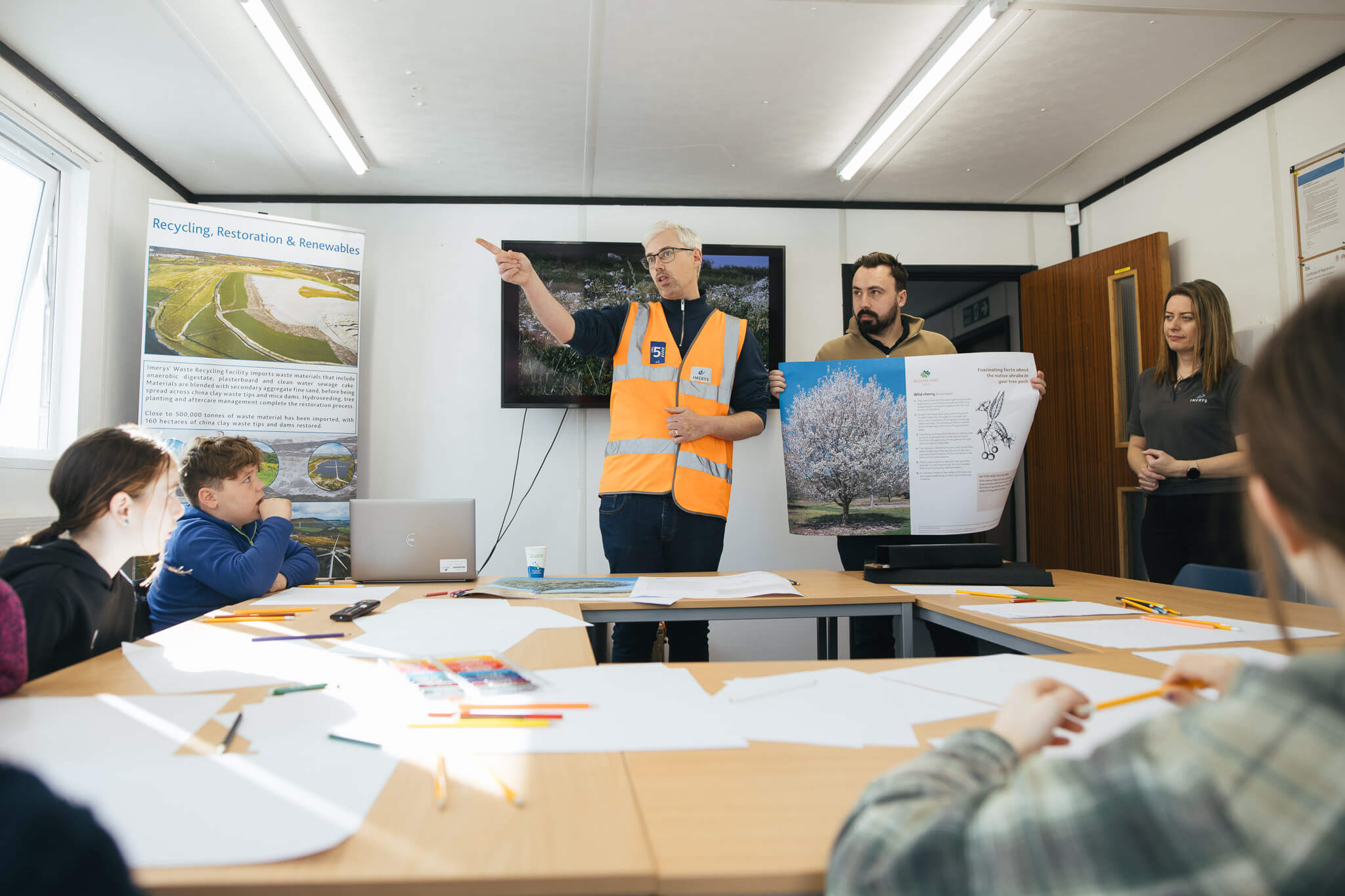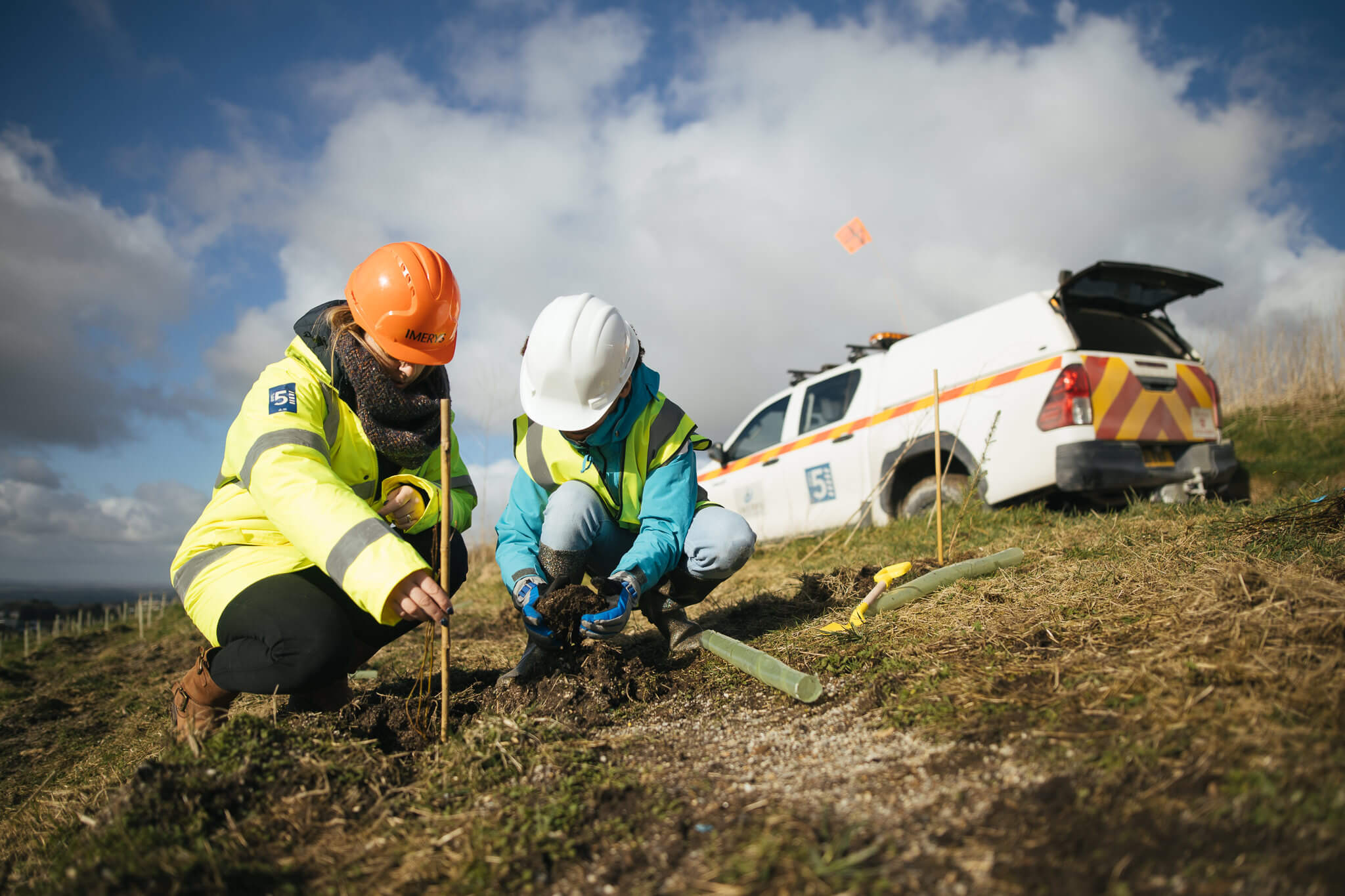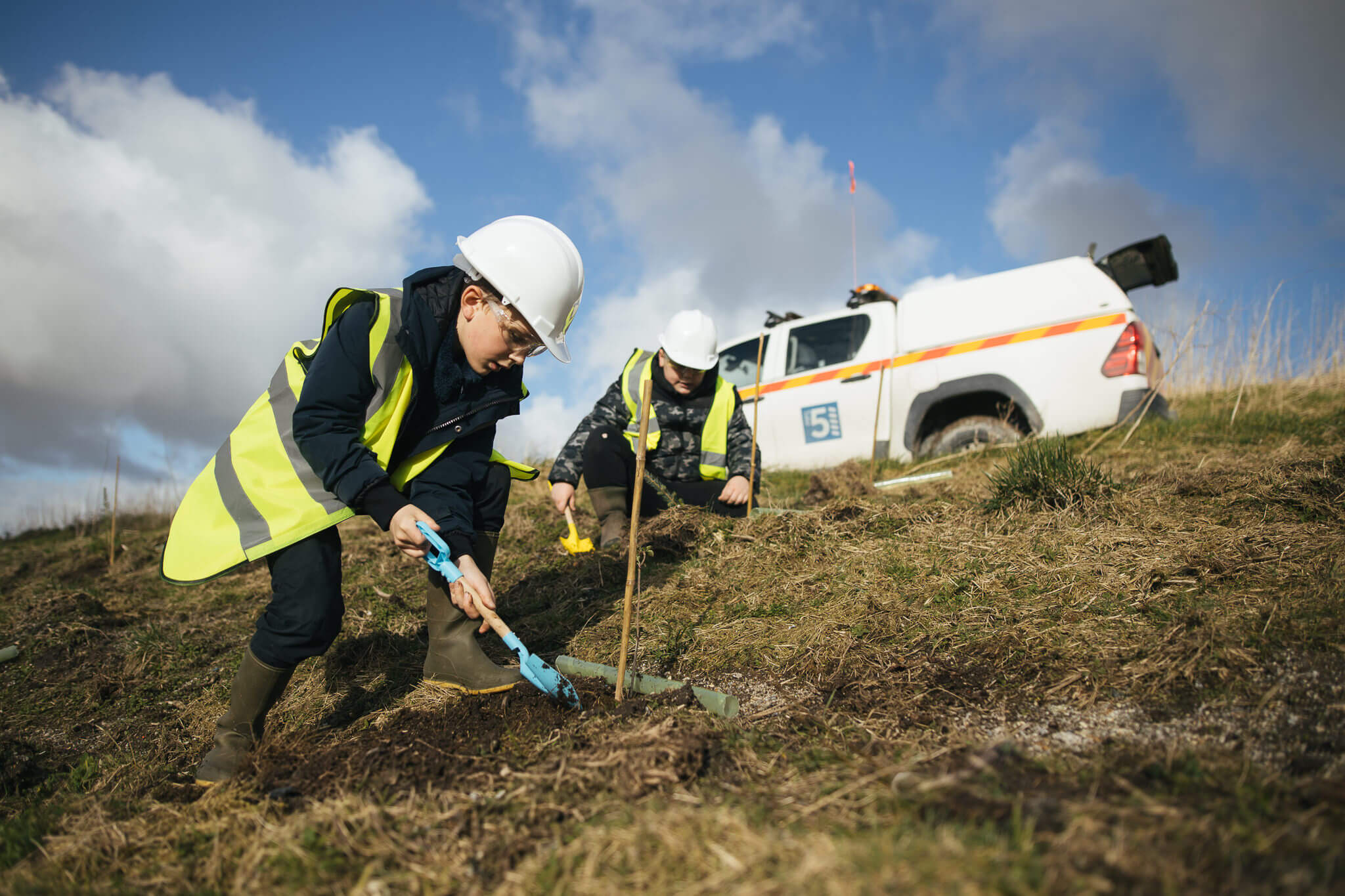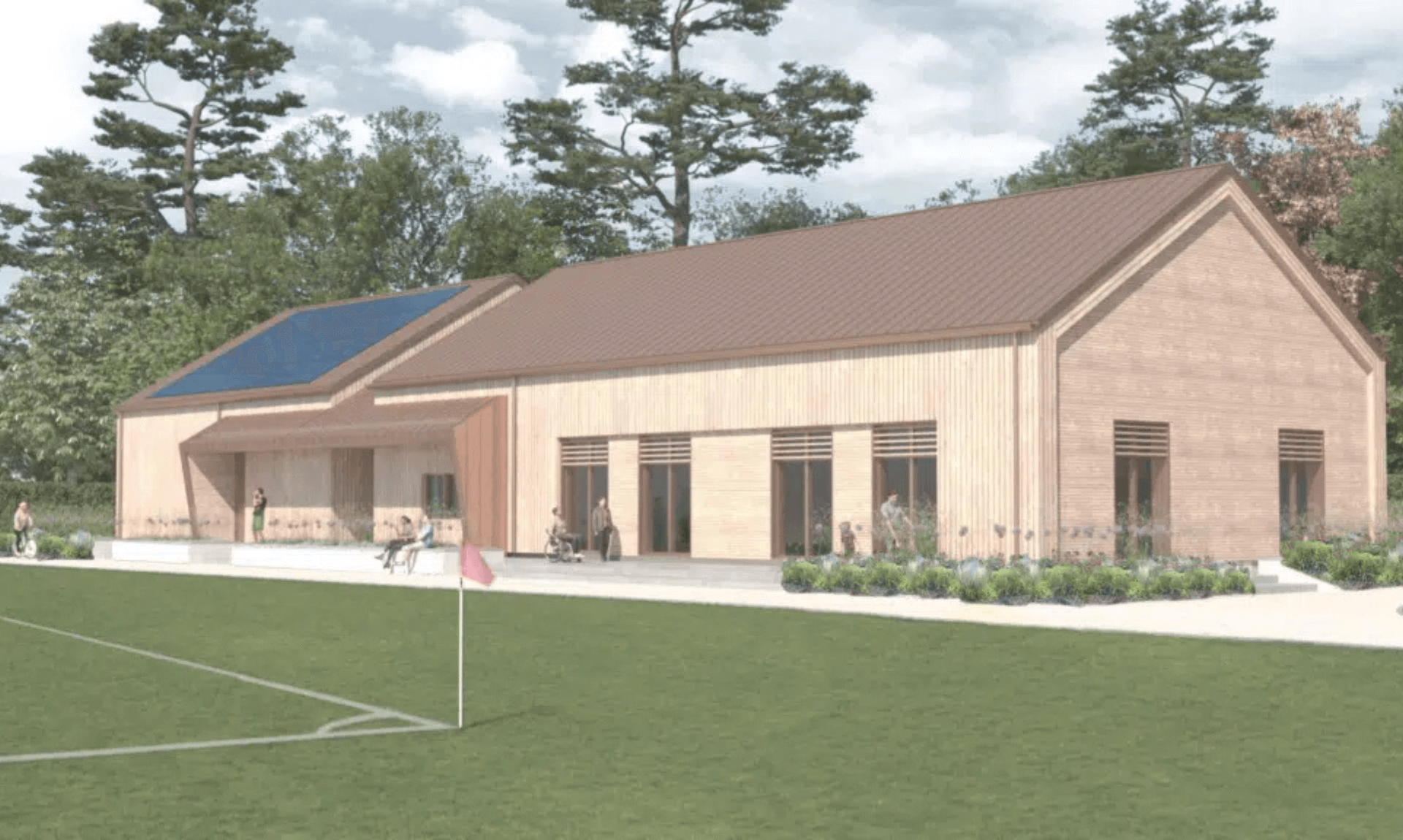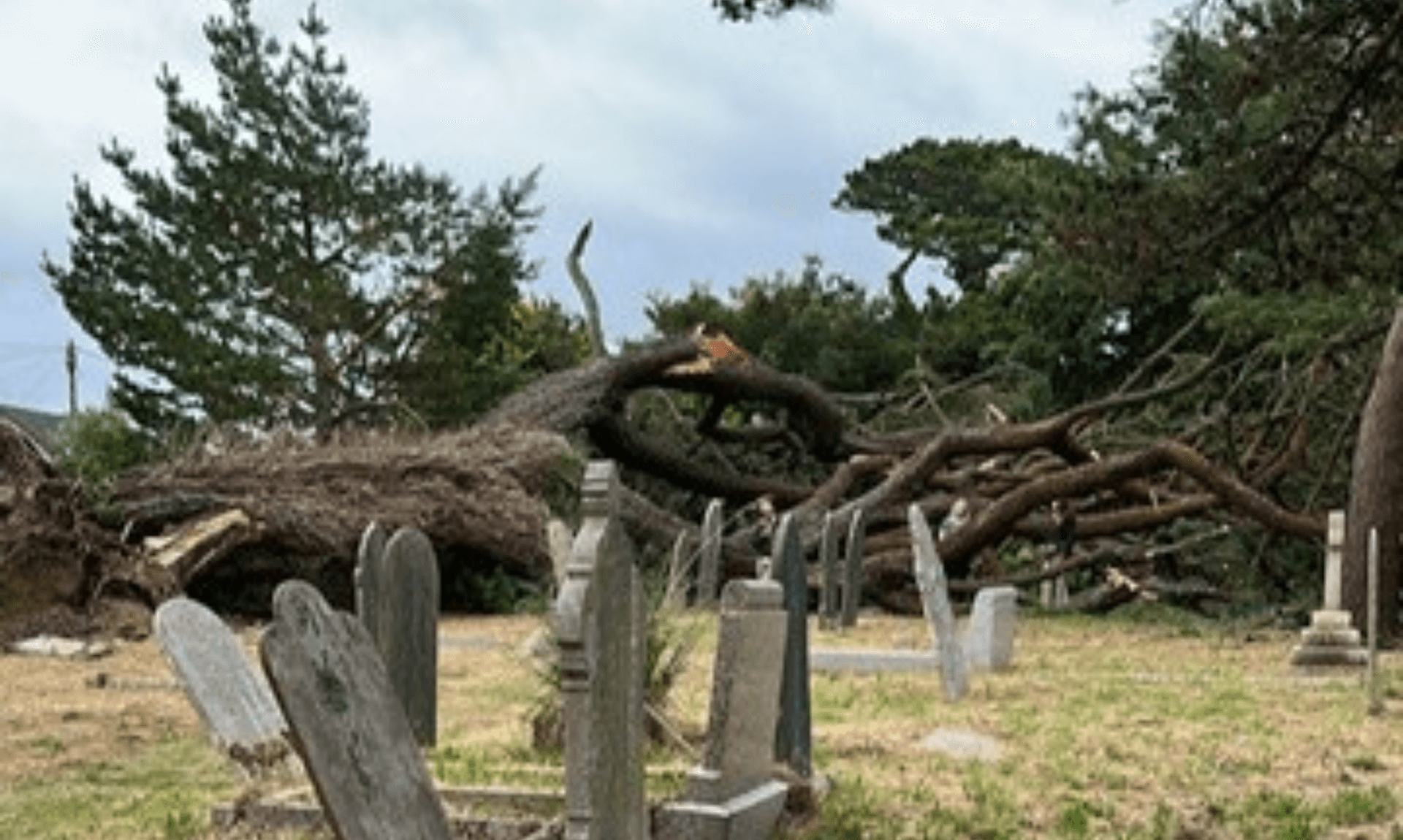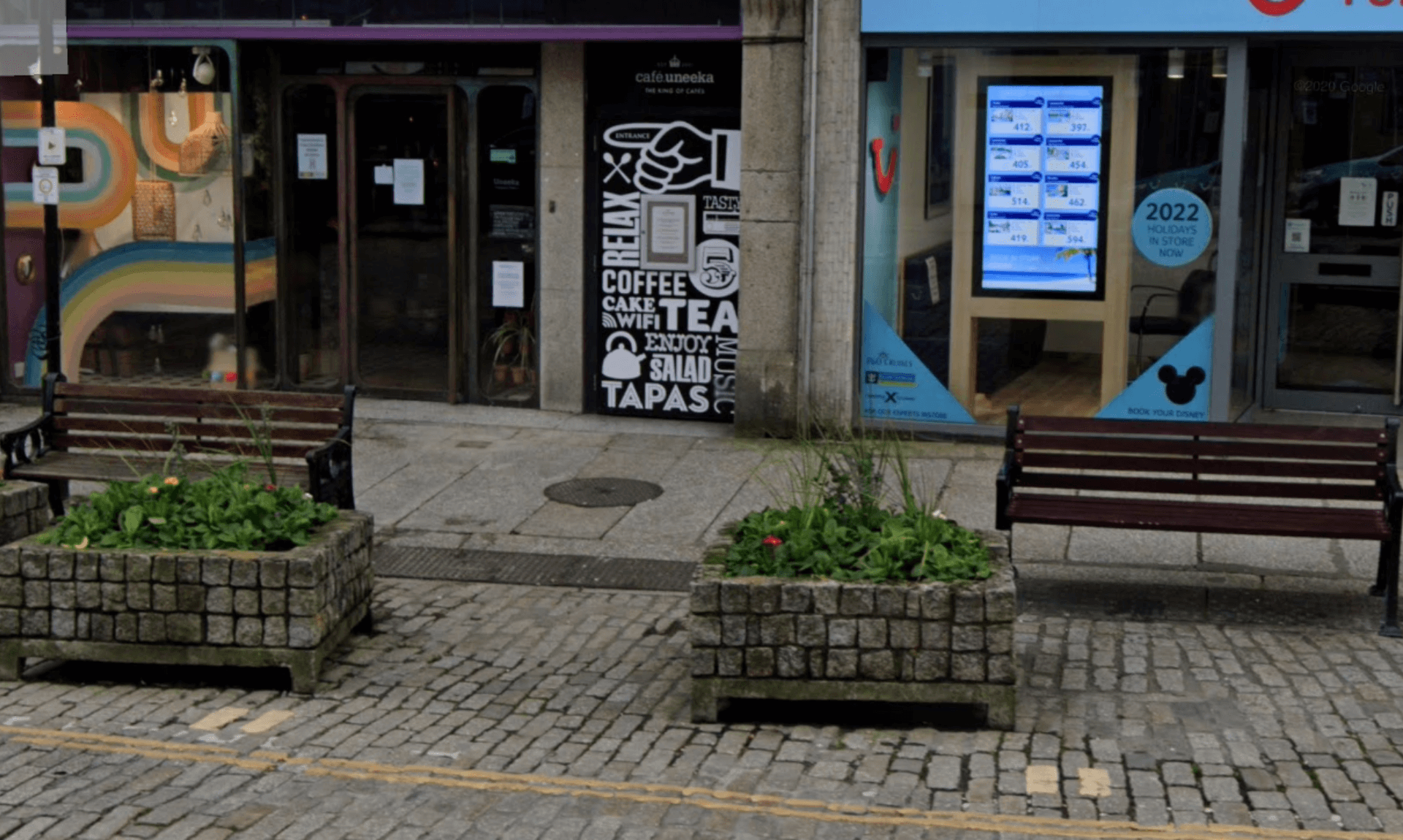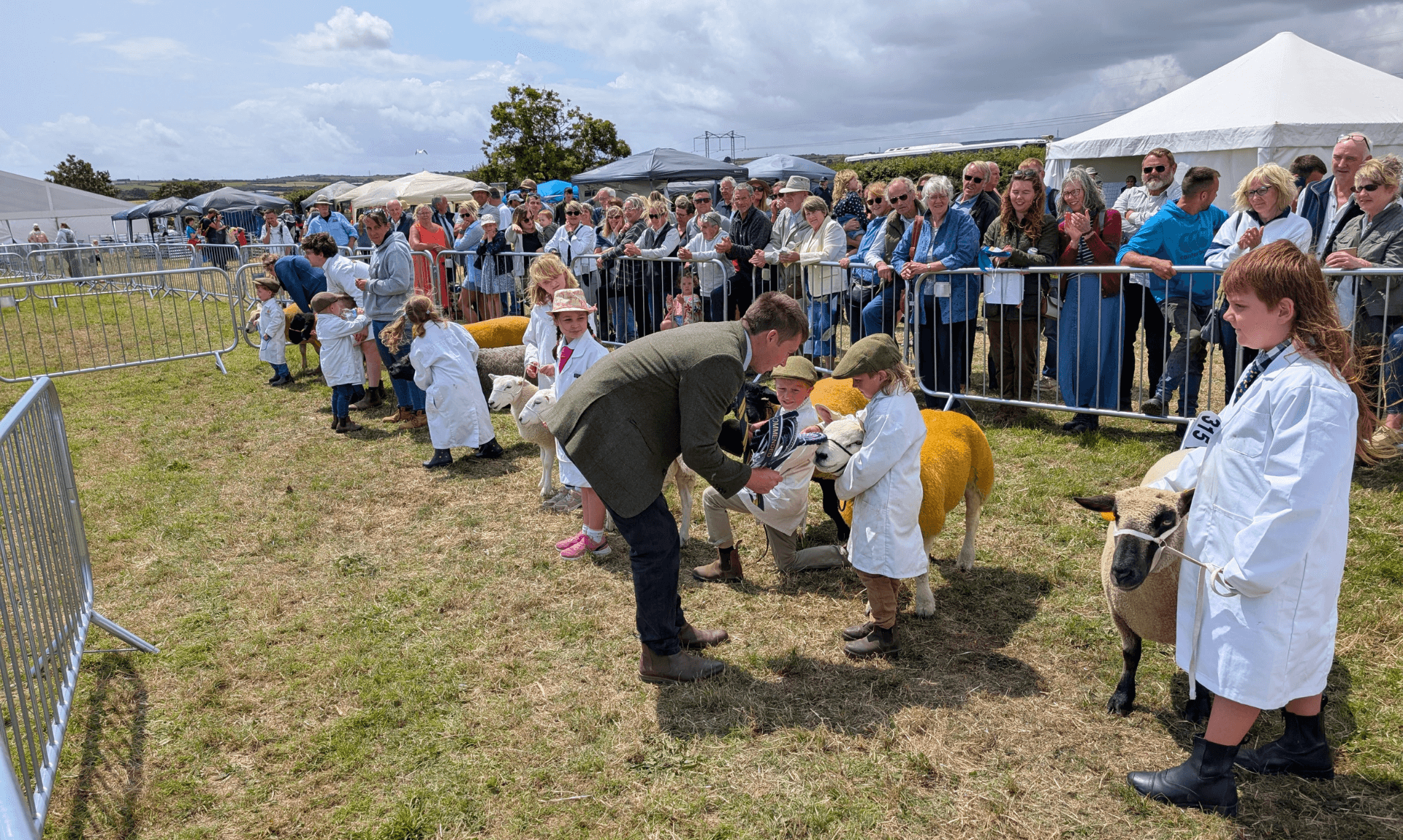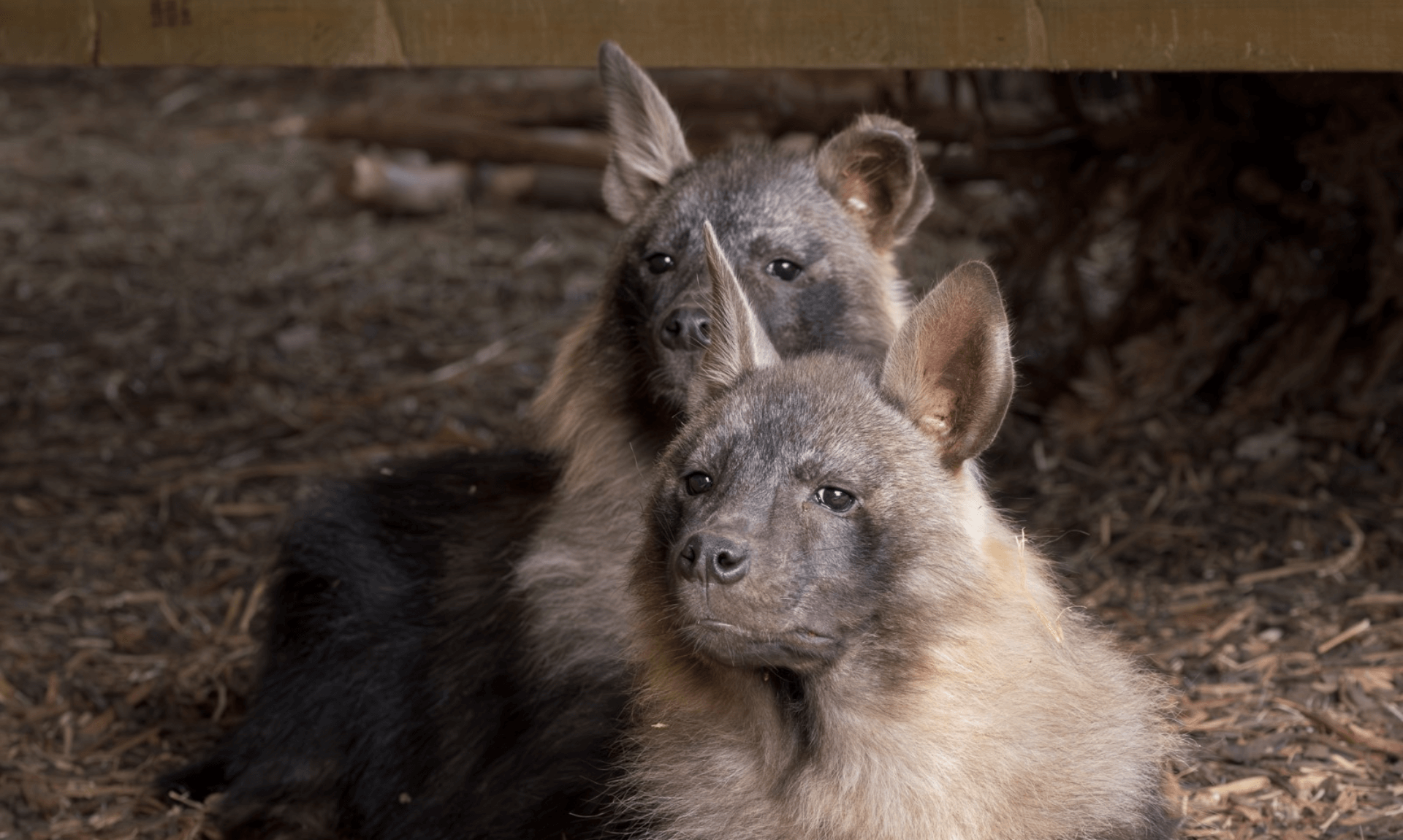Children Help Restore Cornwall’s Clay Pits – A New Forest Takes Root
A Hands-On Lesson in Environmental Restoration
Year five pupils from Whitemoor Primary Academy have played a part in transforming Cornwall’s historic China clay pits, working alongside Imerys to plant trees in the Dubbers area near Nanpean. This forms part of the company’s nature restoration and preservation program, which focuses on regenerating mined-out pits and creating biodiverse landscapes, with the long-term goal of increasing public access.
Over 150,000 trees have been planted this winter at Dubbers, a name that nods to Cornwall’s clay heritage – it’s the term for a flat-ended pick once used by clay workers. The site sits next to Littlejohns pit, the world’s largest kaolin quarry, which continues to export the mineral for use in everyday products, from ceramics to cosmetics.
Bringing Nature Back to the Clay Country
Imerys has spent years restoring land outside Nanpean, with more than 75 hectares now complete. The process involves backfilling quarries with tailings – rock and sand from mining – before a compostable mix is laid down to create a new soil layer. Grass and wildflower seeds are then sprayed over the area, encouraging biodiversity.
Wildlife is already thriving in the newly restored landscape, with sightings of red deer, skylarks, little ringed plover, jacksnipe, dingy skipper butterflies and Cornish honey bees. A grant from DEFRA and the Forestry Commission has helped fund the forest’s development, ensuring long-term regeneration.
Mark Hewson, who leads Imerys in the UK, highlighted the importance of the project:
“Restoring historical mining land is a huge part of our work here in Cornwall. This land has been mined for kaolin – China clay – for over 250 years. It’s our responsibility to return the land to the condition it would have been in pre-mining – and ultimately provide as much access as safely possible to the local community.
“We’re delighted to be able to invite Whitemoor Primary year five along to help us with this work! They did a great job and we hope they will be proud to tell their own children some day about their role in planting a new forest in the clay country!”
Inspiring the Next Generation
For the pupils of Whitemoor Academy, the project was not just about planting trees – it was a chance to connect with their local landscape and learn about potential future careers.
Gemma Hooper, head teacher at Whitemoor Academy, said:
“We had a great time, it’s fantastic for us to be able to work with the wider community in this way. Many of our pupils come from families with a long history of working in the China clay pits, and so there is already an interest. It’s great to be able to build on that and show them potential future careers, right on their doorstep!”
Sean Simpson, Imerys’ waste recycling and planning manager, was pleased to welcome the children to Dubbers, which is right next to their school.
“The children were very enthusiastic! They each planted a selection of trees, chosen from native broadleaf species, such as sessile oak, wild cherry, sycamore, common alder and silver birch and mixed conifer, including sitka spruce, Corsican pine and Scots pine – which is in keeping with what we know would have grown here in the past. It is important that we plant trees which will grow well and provide a habitat for the local flora and fauna – which are already thriving on this newly restored land – as well as attracting new species as the woodland develops.”
A Growing Habitat for Wildlife
Local ecologist Bob Bosisto also spoke with the children about the wildlife already making a home at Dubbers.
“We talked to the children about the sort of species already living here at Dubbers – including the very rare dormice – and I explained how we study these lovely creatures and we searched the area for signs of them, and other interesting finds!”
What’s Next for Imerys’ Restoration Work?
Imerys’ next step will be to install beehives at the site in collaboration with Bees Off, a project that helps relocate at-risk bee populations. The company is also preparing to restore the Scarewater area near Fraddon using the same techniques developed at Dubbers.
For those interested in learning more or offering suggestions, contact jane.devereux@imerys.com. A downloadable map of permissive pathways around the clay villages can be found on the Imerys website.
Share This Story, Choose Your Platform!
To keep up with the latest cornish news follow us below
Follow CornishStuff on Facebook - Like our Facebook page to get the latest news in your feed and join in the discussions in the comments. Click here to give us a like!
Follow us on Twitter - For the latest breaking news in Cornwall and the latest stories, click here to follow CornishStuff on X.
Follow us on Instagram - We also put the latest news in our Instagram Stories. Click here to follow CornishStuff on Instagram.
You Might Also Be Interested In
Latest News In Cornwall
Daily Cornish news by email
The latest daily news in Cornwall, sent direct to your inbox.

